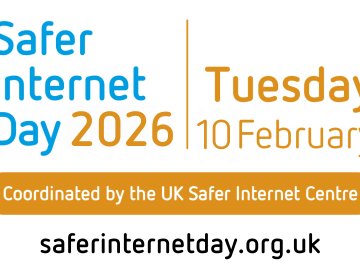As AI-generated content has become increasingly more visible online, the way we describe forms of this emerging media developed by artificial intelligence has varied. If you look in the news today, you may see a headline about ‘deepfakes’, which has become a commonly used term to describe AI-generated content that replaces the likeness of one person with another. However, you may also hear AI-generated content being referred to as ‘synthetic media’, ‘AI-generated media,’ ‘media produced by generative AI,’ and sometimes ‘personalised media’ or ‘personalised content.’
With so many terms floating around in our vocabulary, it can be hard to know what terminology is best to use, and whilst the term ‘deepfake’ has become most widely recognised to describe all forms of AI-generated content, it also has a complicated past.
Origins of the word 'Deepfake'
The term ‘deepfake’ is a combination of ‘deep learning’ and ‘fake’. It originated from an online community in late 2017, from a user of the same name. This user posted manipulated videos on the platform, depicting intimate images that superimposed the faces of celebrities onto other individuals in a convincingly realistic manner, without their consent.
Since then, the term ‘deepfake’ has become more commonly used to describe any form of manipulated media that relies on AI to produce content replicating the likeness of a person. Alongside this, access to ‘deepfake’ technology has become increasingly accessible, with research from Ofcom revealing that one in seven adults (14%) say they have seen a sexual deepfake.
The Problem with Using ‘Deepfake’
As the creation of ‘deepfake’ content has surged, we have seen the impact that this form of content is having across the world, with Home Security Heroes’ findings revealing that deepfake pornography makes up 98% of all deepfake videos online.
Unfortunately, this form of content and the technology behind it has continued to be misused to manipulate an individual’s likeness to generate non-consensual intimate images. Through our helplines, Revenge Porn Helpline and Report Harmful Content, we have seen how ‘deepfake’ content has negatively impacted the lives of those depicted; with individuals also having their likeness used to defame, impersonate, blackmail, and scam others.
Let’s talk ‘Synthetic’
Although ‘deepfake’ captures the idea of using deep learning technology to develop fake content, the negative history surrounding how it was coined, and how it has continued to be misused to deceive and commit forms of intimate image abuse and harm, fails to account for the many positive ways AI-generated content can be used.
‘Synthetic’ has commonly been used to refer to anything that is made with artificial components, which includes content created with AI-generated technology. Using the term ‘synthetic’ can provide a more neutral and survivor-focused term that acknowledges the entire spectrum of AI-generated content online. In the case of synthetic content featuring intimate images, this would be referred to as ‘synthetic sexual content’. For any other content that is harmful in nature, such as impersonation, scams, or defamation, that is synthetically generated but isn’t sexual, this would be called ‘synthetic harmful content’.
Looking to the Future
Whilst SWGfL continues to use ‘synthetic media’, ‘synthetic sexual content’ and ‘synthetic harmful content’ to describe different forms of AI-generated content, it is always important to remember that as technology continues to evolve, so will our responses.
What the future holds for AI-generated content, and how we continue to respond to it as a collective and global society is yet to be seen. Currently, more organisations are looking at ways to identify and label synthetic media, and governments are looking at how to address the harms and forms of abuse that can emerge from this technology and media.
Support Available
For anyone who has been affected by synthetic sexual or harmful content, there is support available to help. Anyone over the age of 13 and living in the UK who has been affected by synthetic harmful content can use Report Harmful Content to help understand community guidelines and report harmful content on social media platforms.
Any UK adult over the age of 18 who has been affected by intimate image abuse, which includes synthetic sexual content, can get in touch with the Revenge Porn Helpline. Adults across the world can also use StopNCII.org to help prevent their intimate images from being shared across participating platforms.
To find out more about synthetic media and the support available, visit the SWGfL Synthetic Media Hub for tailored advice.






